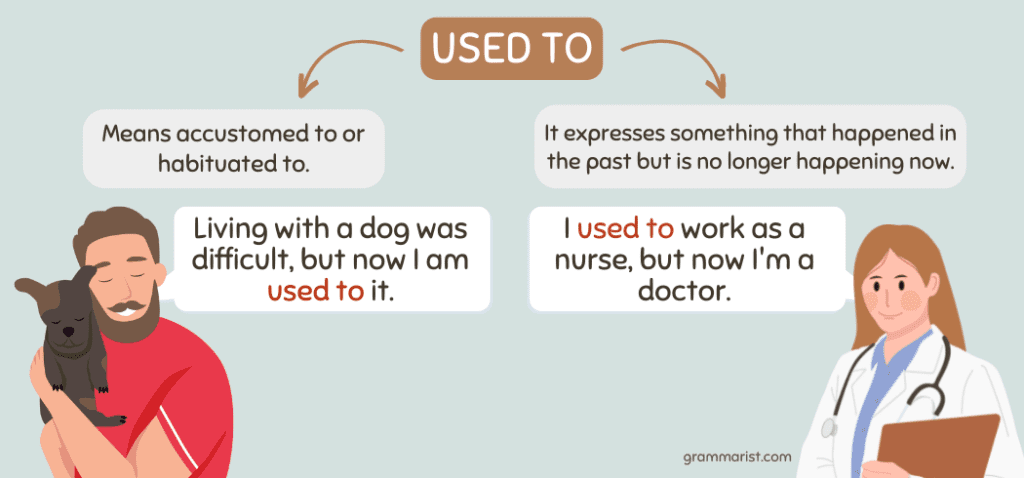Moving things, whether it's for a big move or just getting some stuff across town, can feel a bit tricky, you know? Keeping everything secure is a big deal, and that’s where something like a ratchet strap really shines. They’re super popular, and honestly, they do a great job of holding cargo tight. People like them because they’re easy to work with and they hold things down so well.
You might have seen them on trucks or even at home, holding down furniture or equipment. There’s a good reason for their widespread use, actually. They give you a strong hold, which means your valuable items stay put while you’re on the go. This clear and concise guide will help to avoid frustration, especially if you’re just getting started.
Today, we will be going over everything you need to know to get caught up with how to use a ratchet strap, how to tie a ratchet strap, how to release a ratchet strap, and more! Whether you're transporting goods in a truck or van, moving home, or tying down gear, these simple steps can make a big difference, so pay attention, more or less.
Table of Contents
- Understanding Ratchet Straps
- Getting Ready for Use
- Step-by-Step Guide to Using Ratchet Straps
- How to Release a Ratchet Strap
- Common Mistakes to Avoid
- Tips from the Experts
- Storing Your Ratchet Straps
Understanding Ratchet Straps
Before we jump into how to use them, it’s good to know what you’re working with, actually. Ratchet straps are very popular for holding things down securely. They’re a pretty simple tool, but they do a big job. They help keep your items from moving around, which is very important for safety, you know.
Components of a Ratchet Strap
A ratchet strap, basically, is made up of two main parts. There’s the webbing strap itself and the ratchet buckle. The webbing is typically made of strong polyester, ensuring strength and longevity. This material is chosen because it can handle a lot of pulling and still hold up, which is pretty important.
The ratchet buckle is the part with the moving handle and the gears. This is what lets you pull the strap tight and keep it that way. It’s designed to give you a lot of leverage, so you can get a really snug fit without too much effort. It’s a clever design, honestly, that makes securing things quite simple.
- 5movierulz Today
- 5movierulz 2024 Download
- Okhatrimazacom 2025 Bollywood
- Sasha Prasad Sex
- Www5movierulzstream
Why Use Ratchet Straps?
Ratchet straps are popular because they're easy to use and secure cargo well. They give you peace of mind when you’re transporting items. Think about it: if your load isn’t tied down right, it could shift, get damaged, or even cause an accident, so that’s a big deal. They help prevent all that.
They’re also very versatile. You can use them for all sorts of jobs, from moving furniture in a pickup truck to securing kayaks on a roof rack. Their ability to get things really tight makes them a go-to choice for lots of different situations. They’re just really effective, you know.
Getting Ready for Use
Before you even touch the strap, there are a couple of things you should think about. Getting ready means making sure you have the right strap for the job and that it’s in good shape. This little bit of preparation can save you a lot of trouble later, more or less.
Choosing the Right Strap
We’ll cover the basics of ratchet straps, including their components, how to choose the right one, and more. Straps come in different sizes and strengths, so picking the right one for your load is pretty important. A small strap might not be enough for a heavy item, and a huge strap might be overkill for something light, you know.
Always check the weight rating on the strap. This tells you how much weight it can safely hold. Matching the strap’s capacity to your cargo’s weight is a key step for safe transport. It’s like picking the right tool for any job, really.
Inspecting Your Straps
Learn from tips from the experts and things to look out for when using your straps. Before each use, give your ratchet strap a quick check. Look for any cuts, frays, or tears in the webbing. A damaged strap might not hold as well and could break under pressure, which is not good, obviously.
Also, check the ratchet mechanism itself. Make sure it moves freely and the gears aren’t stuck or rusty. A well-maintained strap is a safe strap, and this quick check takes almost no time at all. It’s a simple habit that pays off.
Step-by-Step Guide to Using Ratchet Straps
Alright, let’s get to the main part: how to actually use these handy tools. This guide will walk you through the setup, use, and storage of your ratchet straps. It’s pretty straightforward once you get the hang of it, you know.
Setting Up the Ratchet
To use ratchet straps, start by using the release catch to open the ratchet. This is usually a small lever or button on the handle. You push it down, and the ratchet handle will open all the way flat. This position is crucial for threading the strap correctly, so make sure it's fully open, basically.
Once it’s open, you’ll see a slot where the strap goes. This slot is where the magic happens, so to speak. Make sure the strap is not twisted before you put it through. A flat strap works much better than a twisted one, which is just common sense, really.
Threading the Strap
Next, thread the strap through the bottom of the ratchet until it feels taut. You want to push the loose end of the webbing through the slot in the center rotating spindle of the ratchet. Pull it all the way through until it’s snug against your cargo, with very little slack left.
This step is where many people make the number one mistake with ratchet straps. The strap needs to go through the spindle from the bottom, not over the top. Getting this right from the start means your strap will tighten properly and hold strong, you know. This video demonstrates how to properly set up any ratchet strap.
Tightening the Strap
Once the strap is threaded and snug, you can start to tighten it. You do this by pumping the handle of the ratchet up and down. Each pump will pull a little more of the strap through the mechanism, making it tighter. You’ll feel the resistance as it gets firmer, so just keep going.
Keep pumping until your cargo is secure and the strap is tight. You don’t want to overtighten, though, as that can damage your cargo or the strap itself. A good rule of thumb is that the cargo shouldn't move when you try to push it by hand. It should feel pretty solid, you know.
Securing the Excess Strap
After tightening, you’ll likely have some extra webbing hanging loose. It’s important to secure this excess strap. If you leave it flapping, it can get caught in tires, blow around, or just be a nuisance. You can tie it off, tuck it away, or use a small bungee cord to hold it neatly.
This small step really helps keep things tidy and safe, especially when you’re driving at speed. It’s just good practice, really, and prevents potential issues. A tidy strap is a happy strap, in a way.
How to Release a Ratchet Strap
When you’re done with your journey or just need to unload, you’ll need to know how to release a ratchet strap. It’s pretty simple, actually, but you need to do it right. First, find the release lever or button on the ratchet handle again, the same one you used to open it up.
Push this lever all the way down and hold it. While holding it, open the ratchet handle completely flat, past its normal open position. This action disengages the locking mechanism, letting the strap go loose. The handle will typically lie flat against the strap or the body of the ratchet, you know.
Once the ratchet is fully open and flat, you can just pull the strap out. It should slide freely, releasing the tension on your cargo. Be careful when releasing, especially if there was a lot of tension, as the strap might spring back a bit. It’s a good idea to keep a firm grip on the strap as it loosens, just to be safe, more or less.
Common Mistakes to Avoid
Avoid the number one mistake with ratchet straps with this video as it demonstrates how to properly set up any ratchet strap. We already talked about threading the strap wrong, but there are a few other things to watch out for. One big mistake is not checking your strap for damage before you use it. A frayed strap is a weak strap, and it can fail when you least expect it, you know.
Another common error is overtightening. While you want your cargo secure, pulling the strap too tight can actually damage the items you’re trying to protect. It can also put too much stress on the strap itself, leading to early wear or even breakage. It’s a bit of a balancing act, really.
Also, don't forget to secure any loose ends of the strap. Leaving them to flap in the wind is not only annoying but can be a safety hazard. They could get caught in something or distract other drivers, so it’s worth taking the extra moment to tuck them away neatly, basically.
Tips from the Experts
Learn from tips from the experts and things to look out for when using your straps. Always use enough straps for your load. Don’t try to secure a huge item with just one strap. Spreading the load across multiple straps gives you better stability and reduces the stress on each individual strap, which is just smart, you know.
Consider using corner protectors or padding under the straps, especially with delicate cargo. This helps prevent the strap from digging into your items and causing damage. It’s a simple addition that can make a big difference in protecting your goods, and it’s pretty easy to do.
Also, re-check your straps after driving a short distance. Sometimes, cargo can settle, and straps might loosen a little. A quick stop after a few miles to give them another tug can ensure everything stays put for the rest of your trip. It’s a good habit to get into, actually, for safety.
Storing Your Ratchet Straps
Proper storage helps your ratchet straps last longer. After you’ve used them and released them, make sure they are clean and dry before putting them away. Wet or dirty straps can develop mold or mildew, which can weaken the webbing over time, so that’s something to watch out for.
Coil the straps neatly. This prevents tangles and makes them easier to grab the next time you need them. You can use a hook in your garage or a dedicated storage bin to keep them organized. A well-organized strap is a happy strap, and it just makes life a little easier, you know.
Keep them out of direct sunlight and away from extreme temperatures when not in use. While the webbing is strong polyester, prolonged exposure to harsh conditions can degrade the material over time. Taking good care of your straps means they’ll be ready to go when you are, basically. For more information on securing loads, you might want to check out resources from a reputable transport safety organization.
Learn more about our main page on our site, and link to this guide for more useful tips.
Frequently Asked Questions About Ratchet Straps
How do you properly secure a load with ratchet straps?
To secure a load properly, first, attach the hooks to strong anchor points on your vehicle or trailer. Then, thread the strap through the ratchet buckle, making sure it goes through the bottom of the spindle. Pull out any slack until the strap is snug. Finally, pump the ratchet handle up and down to tighten the strap until the load is firm and won't shift. Make sure you don’t overtighten, you know.
What is the best way to release a tight ratchet strap?
The best way to release a tight ratchet strap is to find the release lever on the handle. Push this lever down completely and hold it. While holding the lever, open the ratchet handle all the way flat, past its normal open position. This will disengage the lock, allowing you to pull the strap free. Be careful of any sudden release of tension, as the strap might spring back a bit, so just be ready for that.
Can I use a ratchet strap for lifting?
No, ratchet straps are designed for securing or tying down cargo, not for lifting. They are meant to create tension to hold items in place, but they are not built to withstand the dynamic forces and stress of lifting heavy objects. Using them for lifting can be very dangerous and might cause the strap to break, leading to serious accidents or damage. Always use proper lifting equipment for lifting tasks, you know, like slings or chains that are rated for lifting.
Related Resources:



Detail Author:
- Name : Lucile Lueilwitz
- Username : albertha53
- Email : joan.hilpert@yahoo.com
- Birthdate : 1986-11-06
- Address : 8551 Bennett Lodge Paucekberg, DC 23752
- Phone : (937) 697-5249
- Company : Franecki-Willms
- Job : Surveyor
- Bio : Tempora ducimus animi veritatis. Ut placeat culpa ut necessitatibus nostrum. Et at fuga quibusdam ut est voluptatum modi saepe.
Socials
tiktok:
- url : https://tiktok.com/@pschulist
- username : pschulist
- bio : Quia similique quam sequi porro. Est omnis ea ab.
- followers : 4942
- following : 855
facebook:
- url : https://facebook.com/porter_schulist
- username : porter_schulist
- bio : Nulla nisi totam voluptatem possimus.
- followers : 2906
- following : 2053